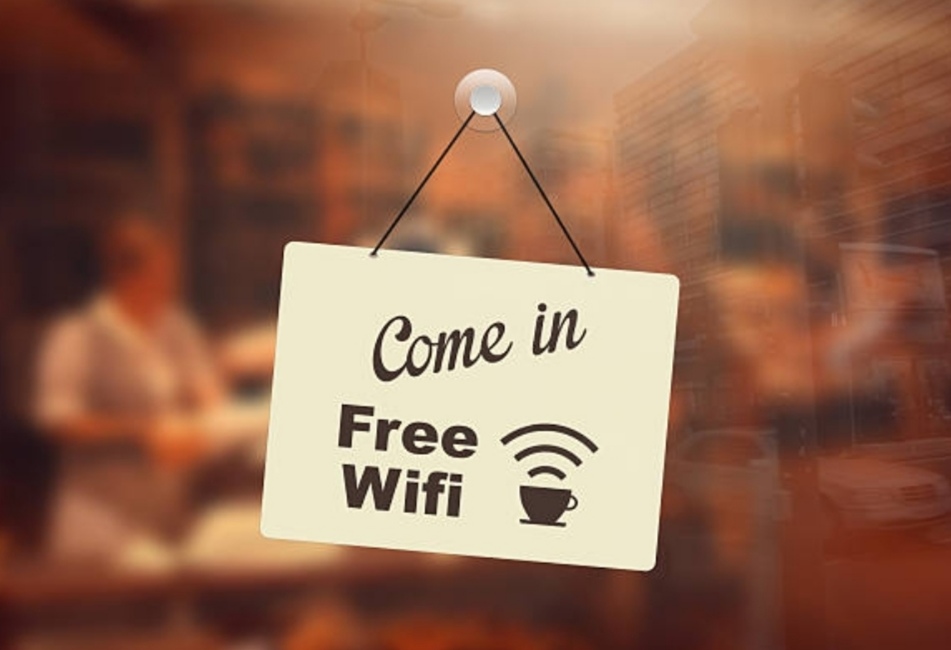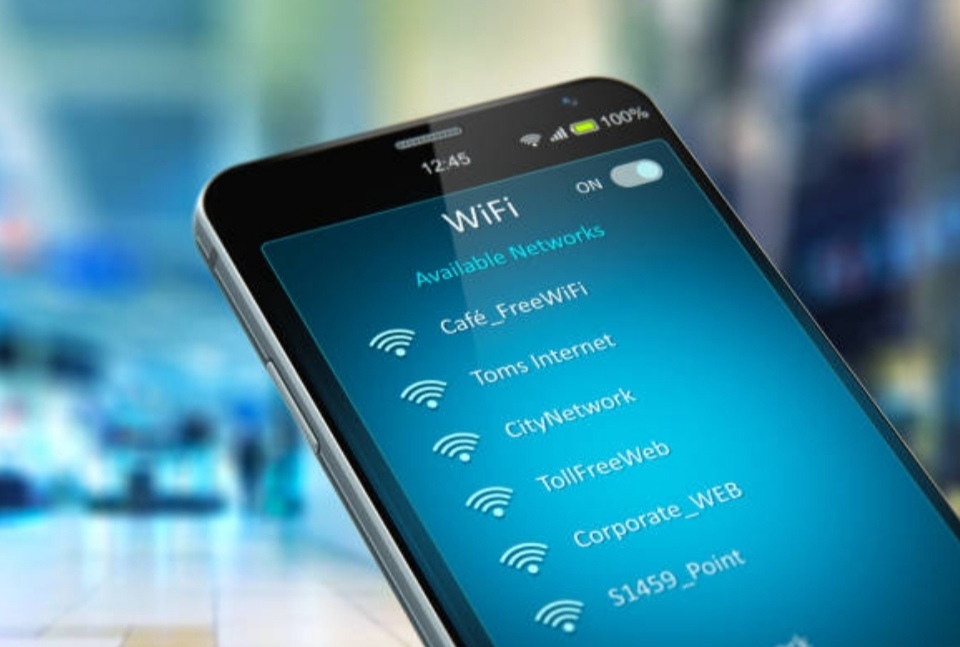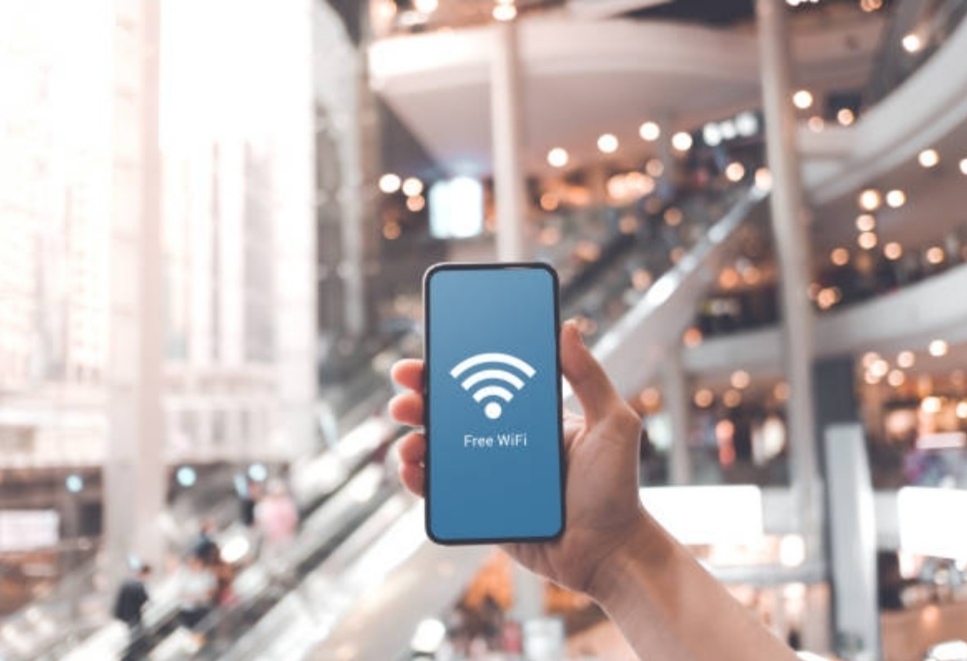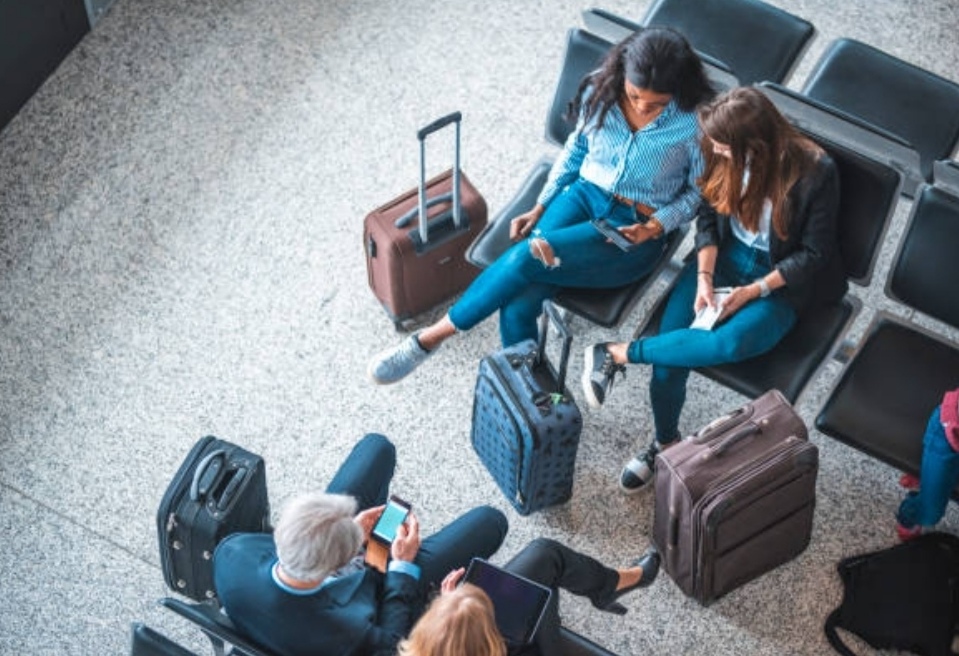Introduction of Public Wi-Fi

Public Wi-Fi: A Blend of Convenience and Risk
Public Wi-Fi networks are everywhere—from bustling cafes and busy airports to hotels, libraries, and shopping malls.
These networks provide unparalleled convenience by enabling us to stay connected on the go, whether it’s for checking emails, browsing social media, or streaming content.
However, while public Wi-Fi offers easy accessibility, it also comes with significant risks.
The very openness that makes these networks convenient also makes them vulnerable.
Unlike private, password-protected networks, public Wi-Fi often lacks robust security protocols.
Cybercriminals can exploit these weaknesses to intercept sensitive data, such as passwords, credit card details, or personal emails.
This is particularly dangerous if you access financial accounts or sensitive information while connected.
Why Security Measures Are Essential
Given the vulnerabilities of public Wi-Fi, it’s crucial to adopt effective security practices.
The importance of protecting your data cannot be overstated.
Neglecting basic precautions can expose you to risks such as identity theft, unauthorized account access, and data breaches.
Knowing how to stay secure on public Wi-Fi is no longer optional—it’s essential.
By understanding the threats and implementing proven security strategies, you can enjoy the benefits of connectivity without compromising your safety.
In the sections ahead, we’ll explore actionable steps and expert advice to safeguard your personal information while using public Wi-Fi networks.
Understanding the Risks of Public Wi-Fi
Public Wi-Fi networks may seem harmless, but they are a hotbed for cyber threats.
Let’s break down the primary risks associated with using these networks, so you can understand why it’s crucial to learn how to stay secure on public Wi-Fi.

Data Interception by Cybercriminals
One of the biggest risks of public Wi-Fi is data interception.
When you connect to an unsecured network, any information you send or receive can potentially be intercepted by hackers using a technique called “packet sniffing.”
Packet sniffing involves monitoring and capturing data packets transmitted over a network.
This allows attackers to view sensitive information like login credentials, email conversations, or even payment details.
The lack of encryption on most public Wi-Fi networks makes it alarmingly easy for cybercriminals to execute these attacks.
For instance, if you log into your online banking account while connected to an unsecured network, a hacker could intercept your username and password.
The consequences? Unauthorized access to your accounts, identity theft, and significant financial loss.
To mitigate this risk:
- Always ensure the websites you visit use HTTPS.
- Use a Virtual Private Network (VPN) to encrypt your internet traffic, making it unreadable to attackers.
- Avoid entering sensitive information while on public Wi-Fi, especially when no security measures are in place.
Potential for Malware Distribution
Another major threat of public Wi-Fi is malware distribution.
Cybercriminals can exploit network vulnerabilities to inject malicious software onto your device.
This is especially common when the Wi-Fi network is poorly secured or lacks proper maintenance.
Once malware infiltrates your device, it can cause severe damage:
- Ransomware can lock you out of your files until you pay a hefty ransom.
- Spyware can monitor your activity and steal private information.
- Trojans can create backdoors, giving hackers remote access to your system.
In some cases, malware is distributed through fake software updates.
For example, when you connect to a compromised network, you might receive a pop-up prompting you to download an “urgent security update.”
Clicking on this link could result in downloading malicious software instead.
To protect yourself:
- Never download files or updates from unknown sources.
- Keep your device’s operating system and antivirus software updated.
- Enable firewalls to block unauthorized access.
Risks of Connecting to Malicious Hotspots (Evil Twin Attacks)
A particularly cunning threat on public Wi-Fi is the “evil twin” attack. In this scenario, hackers create a fake Wi-Fi network that mimics the name of a legitimate one.
For instance, a cybercriminal might set up a network called “CoffeeShop_WiFi_Free,” which appears almost identical to the real network offered by a café.
Unsuspecting users connect to this fake network, thinking it’s safe. However, the moment they do, all their online activity is routed through the hacker’s device.
This allows the attacker to steal sensitive data like login credentials, credit card details, or personal emails.
How can you avoid falling victim to an evil twin attack?
- Verify the network name with the establishment before connecting.
- Avoid networks that don’t require a password or have suspicious names.
- Use a VPN to add an extra layer of security, even if you accidentally connect to a malicious hotspot.
Why You Need to Stay Informed About Public Wi-Fi Risks
These risks underscore the importance of adopting strong security habits whenever you use public Wi-Fi.
Cybercriminals are constantly evolving their tactics, and staying informed about threats like data interception, malware, and fake hotspots is your first line of defense.
By understanding these dangers and taking the necessary precautions, you can minimize your exposure to potential attacks and keep your personal information safe.
Don’t risk your safety on public Wi-Fi! Use these proven strategies to protect yourself today.
Take control of your online security by investing in a trusted VPN service and ensuring your devices are equipped with the latest security software.
Essential Tips to Stay Secure on Public Wi-Fi
When it comes to using public Wi-Fi, a few precautions can go a long way in protecting your sensitive information.
These essential tips will not only help you understand how to stay secure on public Wi-Fi but also ensure you browse safely, even in potentially risky environments.

Use a Virtual Private Network (VPN)
A Virtual Private Network (VPN) is one of the most effective tools for maintaining your privacy while using public Wi-Fi.
It works by encrypting your internet connection, creating a secure tunnel between your device and the internet.
This encryption ensures that even if a hacker intercepts your data, it will be unreadable.
Why is a VPN essential for public Wi-Fi security?
Public Wi-Fi networks are often unencrypted, making your online activity visible to anyone with malicious intent.
A VPN adds a protective layer, shielding sensitive data like login credentials, financial information, and browsing history.
How to choose a reliable VPN:
- Reputation and reviews: Opt for VPN services with high ratings and positive reviews from users.
- Strong encryption protocols: Look for VPNs that use AES-256 encryption, considered the gold standard for security.
- No-logs policy: Ensure the VPN provider does not store logs of your activity to maintain privacy.
- Multiple server locations: More server options can improve speed and bypass geo-restrictions.
Verify the Authenticity of Wi-Fi Networks
Connecting to the wrong network can expose you to significant risks. Cybercriminals often set up fake Wi-Fi networks, called “evil twins,” designed to trick users into connecting.
Steps to confirm a Wi-Fi network’s authenticity:
- Ask the establishment: Before connecting, confirm the network name with staff to ensure you’re using the correct one.
- Check for secure connections: Avoid networks labeled “Open” or “Free Wi-Fi” that lack password protection.
- Monitor network name discrepancies: Be cautious of networks with names that are slightly different from the expected name, such as “CoffeeShop-FreeWiFi” instead of “CoffeeShop_WiFi.”
Connecting to malicious networks can result in your data being intercepted or your device being infected with malware.
Disable Automatic Connectivity Features
Most devices are designed to connect automatically to known networks. While this is convenient at home, it can pose risks in public spaces.
Why disable auto-connect?
Auto-connect features can cause your device to connect to unverified networks without your knowledge.
Hackers may exploit this by creating rogue networks that mimic familiar names.
Steps to stay safe:
- Turn off auto-connect: Disable this feature in your device settings to prevent accidental connections.
- Disable file sharing and AirDrop: These features can make your device vulnerable to unauthorized access.
- Turn off Bluetooth: Hackers can use Bluetooth vulnerabilities to access your device.
Enable Firewalls and Keep Security Software Updated
A firewall acts as a barrier between your device and potential threats. While it won’t block every attack, it’s an essential first line of defense.
How to activate your firewall:
- On Windows: Search for “Windows Security” in the Start menu, then enable the firewall under “Firewall & network protection.”
- On Mac: Go to “System Preferences” > “Security & Privacy” > “Firewall” and turn it on.
Keeping your security software updated is equally important. Outdated antivirus programs may fail to detect new threats, leaving your device exposed.

Limit Activities on Public Wi-Fi
While it might be tempting to check your bank account or shop online while connected to public Wi-Fi, these activities are best avoided. Sensitive transactions are prime targets for cybercriminals.
What activities should you avoid?
- Accessing banking apps or websites.
- Logging into email accounts.
- Entering personal information on websites.
For activities involving sensitive information, switch to cellular data or wait until you’re on a secured private network.
Ensure Website Security
Even with a secure network, not all websites are safe. Verifying a website’s security is crucial before entering personal information.
How to check if a website is secure:
- Look for “HTTPS” in the URL. The “S” stands for secure and indicates that the website encrypts data.
- Check for the padlock icon next to the URL.
- Avoid websites with security warnings or errors.
While HTTPS offers an extra layer of protection, it doesn’t guarantee total security. Always exercise caution and double-check website authenticity.
Utilize Multi-Factor Authentication (MFA)
Multi-Factor Authentication (MFA) is an additional security layer that requires multiple forms of verification before granting access to your accounts.
Why is MFA effective?
Even if your password is compromised, MFA ensures that hackers cannot access your account without completing additional verification steps.
How to enable MFA:
- Check the account settings of your email, banking, or social media platforms.
- Choose an MFA method, such as receiving a text message code, using an authenticator app, or employing biometric verification like fingerprint scans.
Take control of your online safety! Start using these essential tips to secure your connection on public Wi-Fi. Protect yourself today by investing in trusted VPN services and security tools.
Additional Precautions for Enhanced Security
While essential measures like using a VPN and verifying networks go a long way in protecting your data, adding these advanced precautions can significantly enhance your safety.
Incorporate these steps to further safeguard your personal information while learning how to stay secure on public Wi-Fi.

Forget Networks After Use
When you connect to a public Wi-Fi network, your device often remembers it to automatically reconnect in the future.
While convenient, this can pose security risks, especially if the network name is duplicated by cybercriminals.
Why forgetting networks is crucial:
- Prevents automatic reconnections: Your device could unknowingly connect to a malicious network with the same name as a legitimate one.
- Reduces tracking risks: Some public networks may track your device’s MAC address, leading to potential privacy concerns.
- Minimizes clutter: Clearing unused networks keeps your device organized and less vulnerable.
Steps to remove saved networks:
- For Android: Go to “Settings” > “Wi-Fi” > Tap the network > Select “Forget.”
- For iOS: Navigate to “Settings” > “Wi-Fi” > Tap the “i” icon next to the network > Choose “Forget This Network.”
- For Windows/Mac: Open Wi-Fi settings and select the option to manage saved networks, then delete unnecessary ones.
By regularly forgetting public Wi-Fi networks, you take an additional step toward maintaining your privacy and security.
Turn Off Wi-Fi When Not in Use
Leaving your Wi-Fi on while not actively using it can expose your device to risks and drain your battery unnecessarily.
Advantages of disabling Wi-Fi:
- Prevents unauthorized connections: Turning off Wi-Fi ensures your device doesn’t connect to insecure networks automatically.
- Conserves battery life: Your device uses energy to constantly search for available networks.
- Reduces vulnerability to attacks: Hackers can exploit active Wi-Fi connections to gain access to your device.
How to disable Wi-Fi effectively:
- Manually turn off Wi-Fi: Toggle the Wi-Fi switch in your device’s settings.
- Set up automation: Use device settings or third-party apps to automatically disable Wi-Fi when you’re not near trusted networks.
Taking this simple step adds an extra layer of security and efficiency to your device usage.
Be Cautious with Public Charging Stations
Public charging stations, often found in airports, cafes, and malls, are convenient for keeping your device powered. However, they can also be a gateway for hackers to access your data through a method known as “juice jacking.”
What is juice jacking?
Juice jacking occurs when a compromised USB port or cable transfers malware to your device or extracts data without your consent. Hackers can use this method to steal personal information, install malicious software, or monitor your activity.
How to avoid juice jacking:
- Carry your own charger and power bank: Instead of relying on public USB ports, use your personal charging equipment.
- Use a USB data blocker: This inexpensive device prevents data transfer while allowing your device to charge safely.
- Charge from an AC outlet: Whenever possible, use a wall socket with your charger rather than a public USB port.
We recommend this highly-rated power bank and USB data blocker to keep your device secure while charging on the go.
Your online safety matters!
Don’t leave your security to chance—start implementing these additional precautions today.
Secure your devices by investing in trusted security tools and accessories.
FAQs on Public Wi-Fi
To help you better understand how to stay secure on public Wi-Fi, here are detailed answers to some frequently asked questions.
These tips aim to address common concerns, provide actionable advice, and enhance your online security.

What are the biggest risks of using public Wi-Fi?
Public Wi-Fi networks often lack proper security measures, making them a prime target for cybercriminals. Some of the most common risks include:
- Data Interception: Hackers can use tools to intercept unencrypted data sent over public Wi-Fi, exposing your passwords, emails, and other sensitive information.
- Man-in-the-Middle Attacks: In this type of attack, a hacker positions themselves between you and the network to eavesdrop or manipulate your communications.
- Malware Distribution: Public networks can be used to spread malicious software, especially if your device lacks updated security software.
- Evil Twin Attacks: Cybercriminals may set up fake Wi-Fi networks with names similar to legitimate ones, tricking you into connecting.
To protect yourself from these threats, follow the best practices outlined in this article, such as using a VPN and verifying network authenticity.
Is it safe to use public Wi-Fi for online banking or shopping?
No, it is not safe to use public Wi-Fi for sensitive activities like online banking or shopping without proper precautions.
These activities involve sharing personal information, including credit card details and login credentials, which can be intercepted on unsecured networks.
To stay safe:
- Use a VPN to encrypt your connection.
- Avoid accessing sensitive accounts unless absolutely necessary.
- Switch to your cellular data for transactions.
- Enable multi-factor authentication (MFA) on your banking and shopping accounts for an added layer of security.
How can I tell if a public Wi-Fi network is secure?
A secure public Wi-Fi network typically requires a password and uses encryption protocols, such as WPA3.
However, even password-protected networks can have vulnerabilities.
To verify a network’s security:
- Check with the establishment: Confirm the correct network name with staff to avoid connecting to a rogue network.
- Look for HTTPS: Ensure the websites you visit have “HTTPS” in the URL, which indicates encrypted communication.
- Avoid open networks: Open Wi-Fi networks with no password are generally less secure.
Taking these steps can significantly reduce your exposure to risks.
What is the safest way to use public Wi-Fi?
The safest way to use public Wi-Fi is by combining multiple security measures:
- Use a VPN: A VPN encrypts your internet traffic, making it difficult for hackers to intercept your data.
- Limit your activities: Avoid accessing sensitive accounts or sharing personal information.
- Enable device security features: Turn on firewalls, keep your software updated, and disable file sharing.
- Verify networks: Always confirm the authenticity of the Wi-Fi network before connecting.
By following these tips, you can use public Wi-Fi more securely and confidently.
Should I always use a VPN on public Wi-Fi?
Yes, using a VPN on public Wi-Fi is highly recommended. A VPN creates a secure, encrypted tunnel between your device and the internet, protecting your data from prying eyes.
Benefits of using a VPN:
- Data encryption: Prevents hackers from intercepting your sensitive information.
- Anonymity: Masks your IP address and browsing activity.
- Access to restricted content: Allows you to bypass geographical restrictions and access blocked websites.
Click here to explore the best VPN services for public Wi-Fi security.

Can hackers attack my device if I’m not actively using Wi-Fi?
Yes, leaving your device’s Wi-Fi on can expose it to threats even when you’re not actively using it.
Hackers can exploit vulnerabilities to connect to your device or extract data.
To minimize this risk:
- Turn off Wi-Fi when not in use.
- Forget public networks after using them.
- Disable automatic connectivity features on your device.
These precautions help prevent unauthorized access and reduce your device’s vulnerability.
How often should I update my security software?
You should update your security software as soon as updates are available.
Regular updates ensure that your device is protected against the latest threats, including viruses, malware, and phishing attacks.
Best practices for security software updates:
- Enable automatic updates to ensure you never miss critical patches.
- Regularly check for updates for your operating system, antivirus, and VPN.
- Use reputable security software from trusted providers.
Staying up to date with your software is a crucial step in learning how to stay secure on public Wi-Fi.
What should I do if I suspect my device has been hacked on public Wi-Fi?
If you suspect that your device has been compromised while using public Wi-Fi, take immediate action:
- Disconnect from the network: Turn off your Wi-Fi connection to stop further data theft.
- Run a security scan: Use antivirus and anti-malware software to detect and remove threats.
- Change your passwords: Update all your account credentials, especially for sensitive accounts like email and banking.
- Monitor your accounts: Check for unauthorized transactions or activities.
- Consult a professional: If the issue persists, seek help from a cybersecurity expert.
Quick action can help mitigate the damage and secure your information.
Don’t leave your online security to chance!
Use these tips and tools to stay safe on public Wi-Fi.
For even more advanced protection, check out our recommended VPNs and cybersecurity tools.
Conclusion of Staying Secure on Public Wi-Fi
Understanding how to stay secure on public Wi-Fi is essential in today’s hyper-connected world.
Public Wi-Fi networks are convenient but often come with significant risks that can compromise your privacy, data, and even financial security.
By adopting the strategies outlined in this article, you can enjoy the benefits of public Wi-Fi while minimizing the potential dangers.

Stay Vigilant and Prepared
The first step in protecting yourself is awareness. Many users underestimate the risks associated with public Wi-Fi, leading to lax security practices.
From man-in-the-middle attacks to data interception, the dangers are real, but with the right tools and habits, they can be effectively managed.
Consider incorporating the following best practices into your routine:
- Always verify the authenticity of the Wi-Fi network.
- Use a VPN to encrypt your internet traffic.
- Enable advanced security features on your devices, such as firewalls and anti-malware software.
These simple yet effective measures form the foundation of a secure and enjoyable online experience.
The Role of Technology in Enhancing Your Security
Modern security tools play a critical role in safeguarding your data on public Wi-Fi.
Whether you’re a frequent traveler, a remote worker, or someone who occasionally uses public networks, investing in the right technology is non-negotiable.
Here’s a quick recap of must-have tools for online safety:
- VPNs: A virtual private network encrypts your connection, shielding your data from hackers.
- Password Managers: Use strong, unique passwords for every account and store them securely.
- Two-Factor Authentication (2FA): Add an extra layer of security to sensitive accounts.
- Endpoint Protection Software: Protects your device from viruses, malware, and phishing attacks.
Building Good Habits for Long-Term Safety
While technology can shield you from most threats, good habits are equally important. Being cautious about your online activities and knowing what to avoid are key components of staying safe.
For instance:
- Avoid accessing sensitive information such as online banking or work emails on public networks without extra precautions.
- Turn off Wi-Fi when not in use to prevent unwanted connections.
- Forget networks after use to reduce the risk of accidental reconnection to rogue Wi-Fi hotspots.
These habits not only enhance your security but also give you peace of mind, knowing you’ve done everything possible to protect yourself.
A Safer Digital Future Is in Your Hands
With the rapid growth of public Wi-Fi availability, the risks of cyber threats will likely evolve.
Staying informed and proactive is your best defense.
Regularly updating your knowledge and adjusting your security practices ensures you remain ahead of potential vulnerabilities.
Remember, how to stay secure on public Wi-Fi is not just a one-time effort.
It’s an ongoing process that requires attention, adaptability, and the right tools. Your data is valuable—don’t leave it unprotected.
Don’t wait for a security breach to take your online safety seriously! Equip yourself with the right tools and habits to navigate public Wi-Fi confidently.
- Start using a trusted VPN now.
- Explore tools for enhanced online security.
- Share this article with friends and family to help them stay safe too.
By following the steps outlined here, you can use public Wi-Fi without compromising your security. Take control of your online safety today—your privacy depends on it.
Stay safe, stay informed, and enjoy the convenience of public Wi-Fi without the worry.
You might also like :

